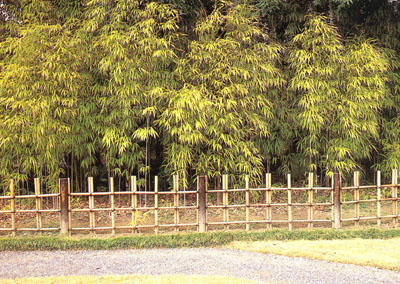During 2011, as the exterior of the tea house was nearing completion, I decided to begin establishing the shape and form of the tea garden (roji), since this will clearly take several years to develop and it was therefore desirable to begin as soon as possible.
An important consideration was how the tea garden would co-exist with the remainder of the garden, which it was intended should remain broadly Western in style (although 'Australian' might be more accurate given the number of mature eucalyptuses!). What was needed was some way of separating the two parts in such a way that each part could benefit from the taller planting in the other part, while maintaining the traditional asethetics of the roji.
The obvious answer was a simple yotsume-gaki - often known in English as a four-eyed fence, although the number of horizontal rails (dōbuchi) can vary. This simplest of all Japanese bamboo fences has its origins in agricultural settings but has become a standard element of Japanese gardens, giving only the lightest suggestion of physical and visual division.

There are many yotsume-gaki variants in existence. I chose to attempt something similar to that illustrated here in Isao Yoshikawa's book Building Bamboo Fences. It is quite low with only three dōbuchi and with single vertical poles (tateko) at the front and paired poles at the rear.
I also decided to include a woven bamboo gate (shiori-do), although it was not intended that the fence should completely enclose the roji and so its presence would be largely decorative.
next